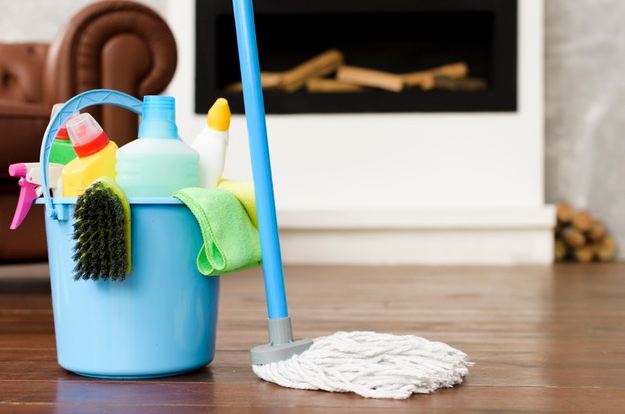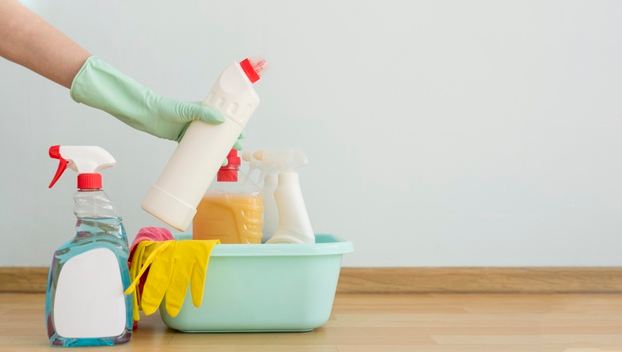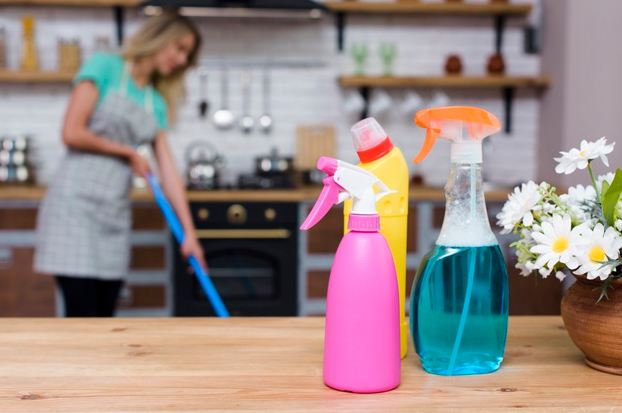Keeping your homes clean is integral for a healthy life. Without doing so, you risk the safety of yourself and your loved ones. But did you know that ironically many cleaning products can introduce toxins and allergens into our homes?
Most chemical cleaning products contain strong chemicals and disinfectants that pose serious health risks to people and pets. Some even constitute suspected neurotoxins, carcinogens, hormone disruptors, and reproductive system toxins.
Not only do such chemical cleaners make your home unhealthy, but they also harm the environment by contaminating waterways and soils when washed down the drain. Given the risks, let’s have a look at what kinds of chemical cleaners to avoid and some eco-friendly tips and tools for a happy and healthy home.
Identifying Harmful Chemical Cleaners To Avoid
As manufactures of cleaning products aren’t required to disclose all of their ingredients, sorting out harmful chemical cleaners can be quite a hassle. To help you through the process of identification, let’s have a look at tips that enable you to identify toxic cleaners even without complete information of its constituents.
Consider Safety Labels As Your Friends
The Environmental Protection Agency (EPA) requires safety labeling from companies producing cleaning supplies. These safety labels, when given attention, can help you swap harmful chemical cleaners.
Avoid chemical cleaners with safety labels citing strong warnings. Specifically lookout for words like “Corrosive,” “Highly Flammable,” “Severely Irritating,” or “Highly Combustible.’’.
Generally, safety labels marked with the word ‘caution’ are usually the least harmful of all.
Read The Chemical Composition: Know Your Toxins To Avoid
While all chemical-laden cleaners are harmful, studies reveal that certain groups of cleaners can introduce more toxicity in your homes than the others. It is because they contain more harmful constituents.
Generally, Cleaners that are laden with harsh chemicals can make your homes highly toxic. They pollute the air by introducing allergens and toxins, leading to a myriad of health problems. Some common health problems include dizziness, asthma attacks, and irritation of skin, respiratory tracts, and eyes. Therefore, it is incredibly important to read the chemical composition of your cleaning products.
The following is a walkthrough of products and ingredients of concern for each. If your cleaners contain any of the following, let go of them and switch to healthy alternatives.
- Disinfectants & Detergents: Compounds of chlorine, hypochlorite, and phenol; ethylenediaminetetraacetic acid and nitrilotriacetic acid; and phosphates.
- Polishers for Furniture: Nitrobenzene
- Glass cleaners: Ammonia
- Spot removers and carpet cleaners: Perchloroethylene or trichloroethylene
- Toilet bowl cleaners: Hydrochloric acid or sodium acid sulfate
One should also avoid chemical cleaners containing ethylene glycol, ethoxyethanol, butoxyethanol, paradichlorobenzene, or Naphthalene.
We also recommend taking extra care when buying chlorinated disinfectants, mildew removers, and cleaners for drain, oven, and toilet-bowl.
Natural or Green Doesn’t Equate to Non-Toxic
With an increase in environmental awareness, many manufacturers market their cleaning products as ‘green’ and environmentally friendly. To our misfortune, there are no set standards yet to certify a product along with these terms. Instead of depending on these two words, look for the following properties in a cleaner for a healthy home:
- Little to no concentration of volatile organic compounds.
- Plant-based ingredients
- Neutral or mild pH
- Recyclable packaging.
- Biodegradable product
Eco-Friendly Cleaning Tips & Tools For a Healthy Home
The following tips and tools might come in handy for a healthy home. Not only will they offer increased protection, but they will also make household chores a breeze.
- If you’re using antibacterial or killing odor sponges, there are chances that they contain harsh chemicals and disinfectants. Therefore, we recommend switching to pure cellulose sponges.
- Did you know that steel wool or dry salts can give your elbow grease a boost? You no longer need to use abrasive or corrosive chemicals to scrub off surfaces. Steel wool with non-toxic soaps can make your cleaning endeavor safe and toxin-free.
- Instead of disposable paper towels, try introducing washable cloths and rags to your cleaning routine. It will help you reduce costs associated with cleaning supplies and reduce paper-waste.
- Buy cleaning supplies that are not chlorine bleached and consist of recycled content.
- Keep your homes well-ventilated by opening windows to exhaust any harmful or irritating fumes outside. Studies reveal that even natural products such as pine cleaners can sometimes emit fumes that irritate.
- Vacuum away toxic chemicals.
- Use green and natural cleaning products for a healthy home and safe cleaning endeavor.
The Takeaway
For a healthy home, it is incredibly important to be thoughtful of your cleaning products and supplies. We recommend going green to not only protect your family and yourself but the environment as well. Chemical Cleaners are, indeed, not needed for a healthy home.



